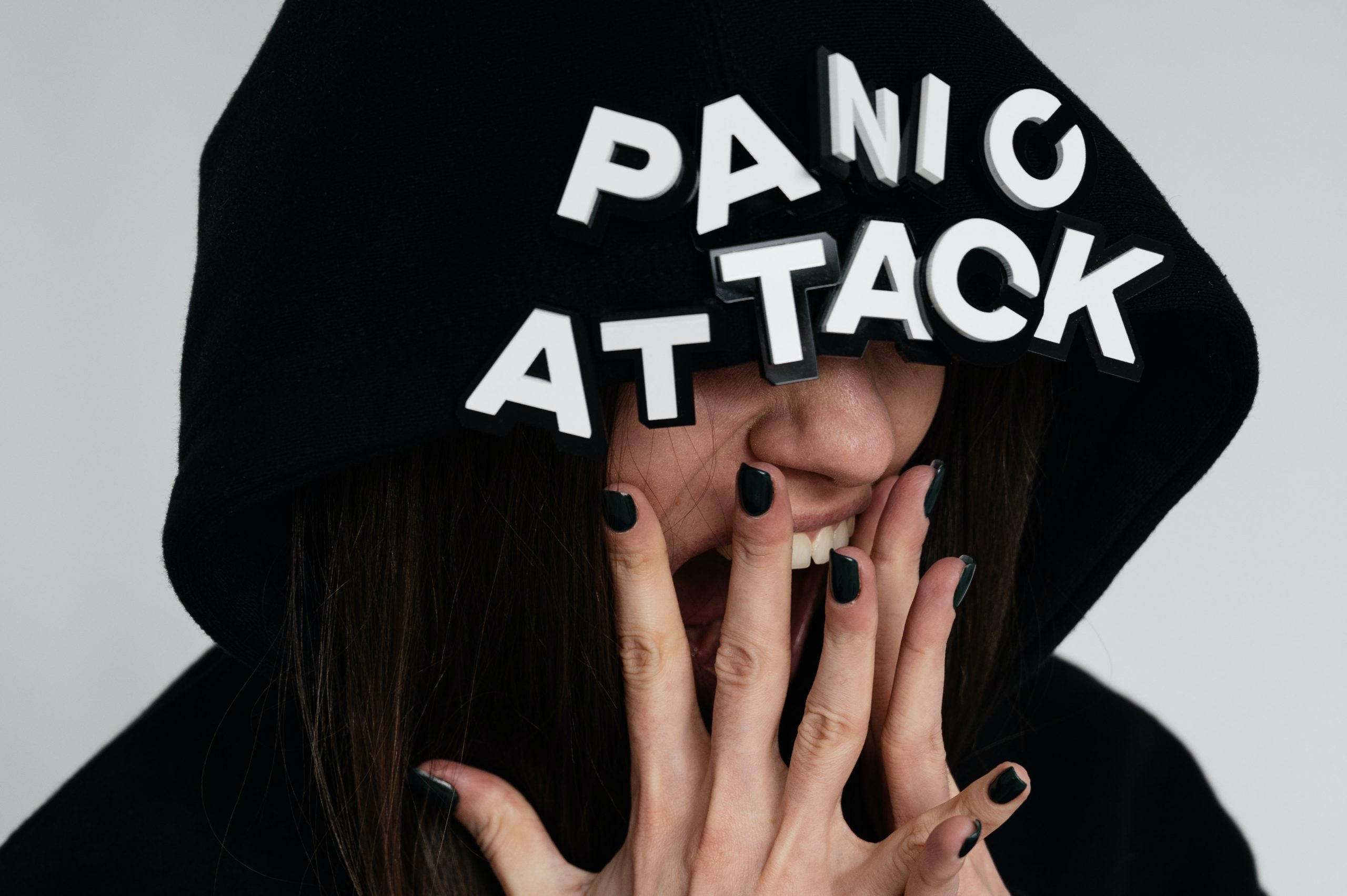Panic attacks are undoubtedly frightening, particularly if you didn’t know what they were when you first experienced them. The symptoms are physically and emotionally exhaustive, and your mental health can take a toll.
But you can learn how to cope with panic attacks and relieve symptoms in real time. Here’s what you need to know.
Understanding Panic Attack Symptoms
Panic attack symptoms vary in intensity and severity. And even if you’ve had an attack in the past, each one may feel somewhat different. That said, these are some of the telltale physical and emotional symptoms of a panic attack:
- Chest pain
- Pounding heart
- Nausea
- Hyperventilating, rapid breathing, or shortness of breath
- Shakiness
- A sense of detachment from reality
- Dizziness
- Tightness and muscle tension
- Numbness
- Fear of losing control
- An intense sense of impending doom
When you’re in the middle of a panic attack, it may seem like time stops altogether. You may even feel like you’re having a heart attack.
But most symptoms peak within ten minutes. The lingering effects can last for a few hours. Because panic attacks can be so draining on the body, it’s normal to feel tired afterward.
Can You Stop a Panic Attack?
A panic attack often happens quickly and without much warning. For that reason, most experts agree that you probably can’t prevent panic attacks altogether. However, over time, you can identify specific stressors that trigger this anxiety. This insight can help you take the steps needed to manage feeling overwhelmed.
Rather than try to stop a panic attack, it may be better to focus on reducing anxiety in your daily life. Doing so can help release tension, reduce symptoms, and build confidence.
How to Cope with Panic Attacks
When a panic attack hits, you might find yourself feeling incredibly anxious. This fear can, of course, exacerbate panic symptoms. Trying to stay calm and present will help you move through this experience. Here are some strategies you can use if you feel a panic attack coming:
Keep taking deep breaths: The physical symptoms of panic attacks often coincide with intensified anxiety. Deep breathing reinforces mindfulness and can counteract these intense symptoms. Start by inhaling through your nose as deeply as you can, holding for a moment, and then exhaling all the air through your mouth.
Try progressive muscle relaxation: Muscle relaxation techniques focus on the practice of tensing and releasing one muscle group at a time. This exercise- along with taking deep breaths- can help slow down your central nervous system. Try to start from the top of your head and move down the rest of your body. Continue tightening and releasing each muscle group until you feel a sense of relaxation throughout the whole body.
Practice grounding techniques: Grounding can help you feel relaxed, and certain techniques have an immediate calming effect. For example, visualizing a safe place can disconnect you from what’s happening in the present moment and move you into a more tranquil mindset.
Move to a quiet place: If possible, try to move to a quiet, calm place. Limit distractions and consider just focusing on your feet for a few moments. Keep taking deep breaths.
Remind yourself you only think you’re losing control: To manage anxiety, you need to realize that most panic attacks are manifestations of stress. When fear overwhelms the system, it may shut down. However, that doesn’t mean you’re in physical harm. Keep reminding yourself that the symptoms of a panic attack- although uncomfortable- are relatively benign.
Don’t criticize yourself: Blaming yourself can make you feel more anxious, and it can make panic attacks worse. Instead, try to develop a positive mantra you can use when you feel panic emerging. For example, you might tell yourself, I am safe, or, I trust these physical sensations will pass.
Dial in on self-care afterward: After the panic attack passes, try to spend some time nurturing yourself. Your body just went through an intense experience, and it’s important to treat yourself with compassion right now. Focus on healthy coping activities that will help reduce stress like talking to a friend, getting aerobic exercise, or taking a nap.
Are Panic Attacks a Sign of Panic Disorder?
According to the Diagnostic and Statistical Manual (DSM), panic disorder entails a pattern of repeated, unexpected panic attacks that significantly affect your quality of daily life. Research suggests shows this condition impacts almost 5% of US adults. It often coexists with other anxiety disorders like generalized anxiety disorder or phobias.
That said, the mere presence of panic attacks does not indicate a clinical disorder. To meet the criteria for panic disorder, panic attacks must happen spontaneously without warning.
Panic disorder treatment may entail a combination of therapy, breathing exercises, and certain medications. Consider talking to your primary care provider to rule out any medical condition.
Getting the Help You Need
Panic attacks can be scary, but they don’t have to interrupt your quality of life. With the right support, you can learn to recognize and manage panic attacks.
Together, we can focus on reducing anxiety and learning new strategies to feel calm during heightened moments of stress. I am here to guide you during this time. Contact me today to schedule a consultation.

